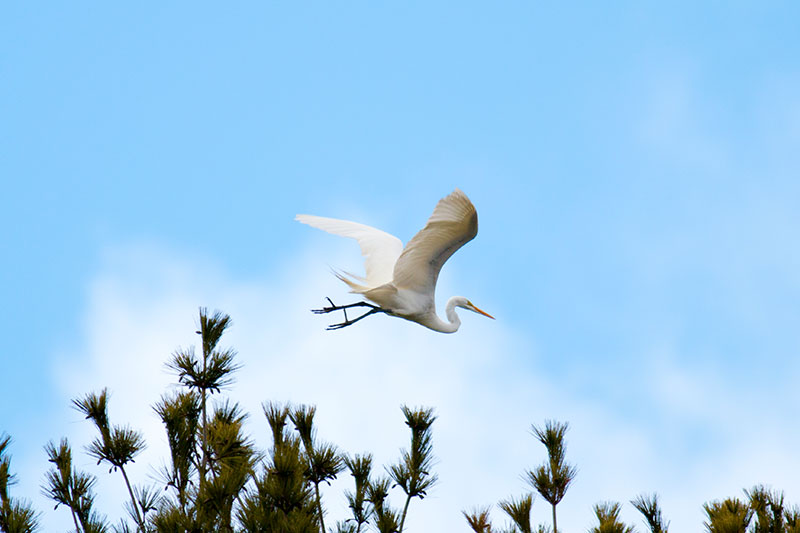Great Egret: The Stately Stalker
8/9/15
By David Brown
August is a popular month for water activities in the local area, especially boating, swimming, and fishing. One uncommon bird species that may be seen along our river, lakes, and creeks in late summer is the great egret (scientific name Ardea alba). This species is a large wading bird with white feathers, a large yellow beak, black legs, and a wingspan of around 4.5 feet. It is most similar to the slightly larger great blue heron, which is very common in the area. However, the great egret is different from the “great white heron,” which is a nickname for the white morph of the great blue heron found only in Florida.

Great Egret
The great egret can be found in both freshwater and saltwater. Birder and author Pete Dunne refers to it as the “stately stalker.” It stands in shallow water and takes careful steps, before thrusting its neck to catch small fish, reptiles, and invertebrates. It breeds along the Atlantic and the Pacific coasts as well as in parts of the midwest. In PA, it only breeds at two sites, both in the lower Susquehanna river valley. One colony is near Harrisburg and the other is near york. Due to the limited breeding, the species is listed as an endangered species in PA. A few are reported each year in Lycoming County and are those are migrating or wandering after breeding.
On August 2nd, four great egrets were seen along the river in Muncy and two more along the river across from the Mill St. boat launch in Montoursville. Other recent reports have come from Hughesville and Jersey Shore. Rose Valley Lake has had them in the past as well. Thankfully, this species is relatively easy to spot, especially in the sun, though sometimes they hide in tall grass and only their neck and head can be seen. There are no other common local species that they can be confused with, however there are some smaller wading birds that are similar that are possible vagrants to the area.
A much smaller white egret with a thin black bill and bright yellow feet is the snowy egret and would be a rare find. Another wader that has similar coloration to the great egret, but is much smaller and often found in fields away from water is the cattle egret. The name comes from their tendency to perch on top of cows.
If you ever find what you think may be a rare bird try to get photographs and feel free to contact me to help document the find. As you get out and enjoy the late summer, look around you may see a “stately stalker” striking at a fish or cruising low over the water.